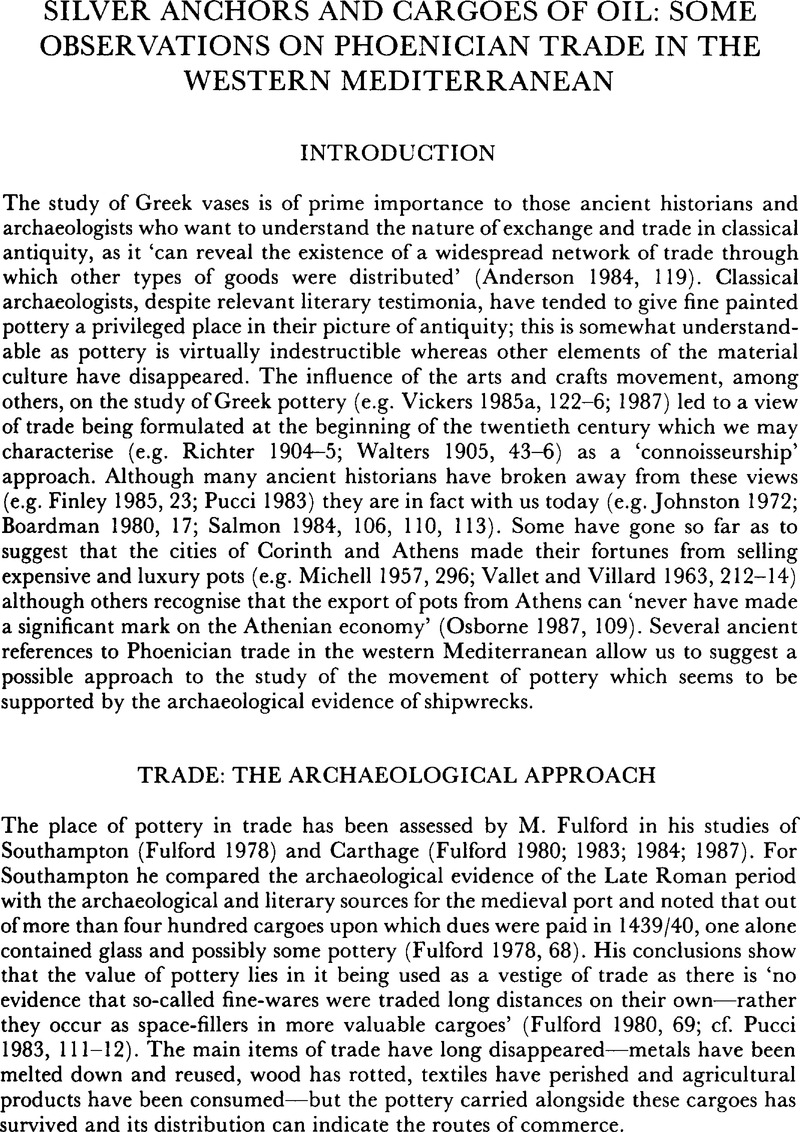Crossref Citations
This article has been cited by the following publications. This list is generated based on data provided by Crossref.
Gill, David W.J.
1988.
Expressions of wealth: Greek art and society.
Antiquity,
Vol. 62,
Issue. 237,
p.
735.
Hölkeskamp, Karl‐J.
1990.
City and Territory, war and trade in the ancient Mediterranean.
Mediterranean Historical Review,
Vol. 5,
Issue. 1,
p.
72.
Parker, A. J.
1995.
Maritime cultures and wreck assemblages in the Graeco-Roman world.
International Journal of Nautical Archaeology,
Vol. 24,
Issue. 2,
p.
87.
Chippindale, Christopher
and
Gill, David W. J.
2000.
Material Consequences of Contemporary Classical Collecting.
American Journal of Archaeology,
Vol. 104,
Issue. 3,
p.
463.
Singer-Avitz, Lily
2007.
On Pottery in Assyrian Style: A Rejoinder.
Tel Aviv,
Vol. 34,
Issue. 2,
p.
182.
Hodos, Tamar
2020.
The Archaeology of the Mediterranean Iron Age.



